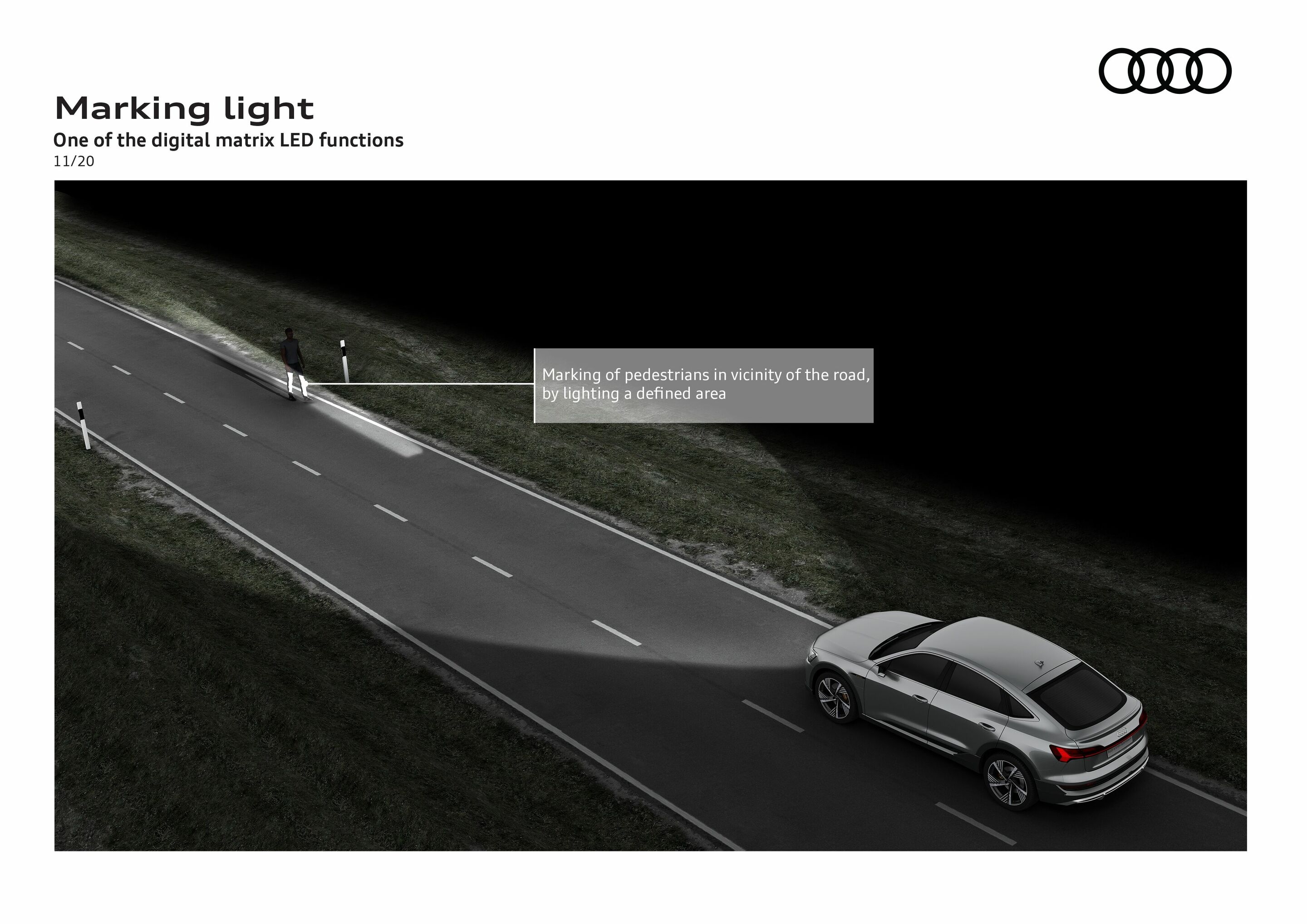Search
All search results for "Markierungslicht"
(13)
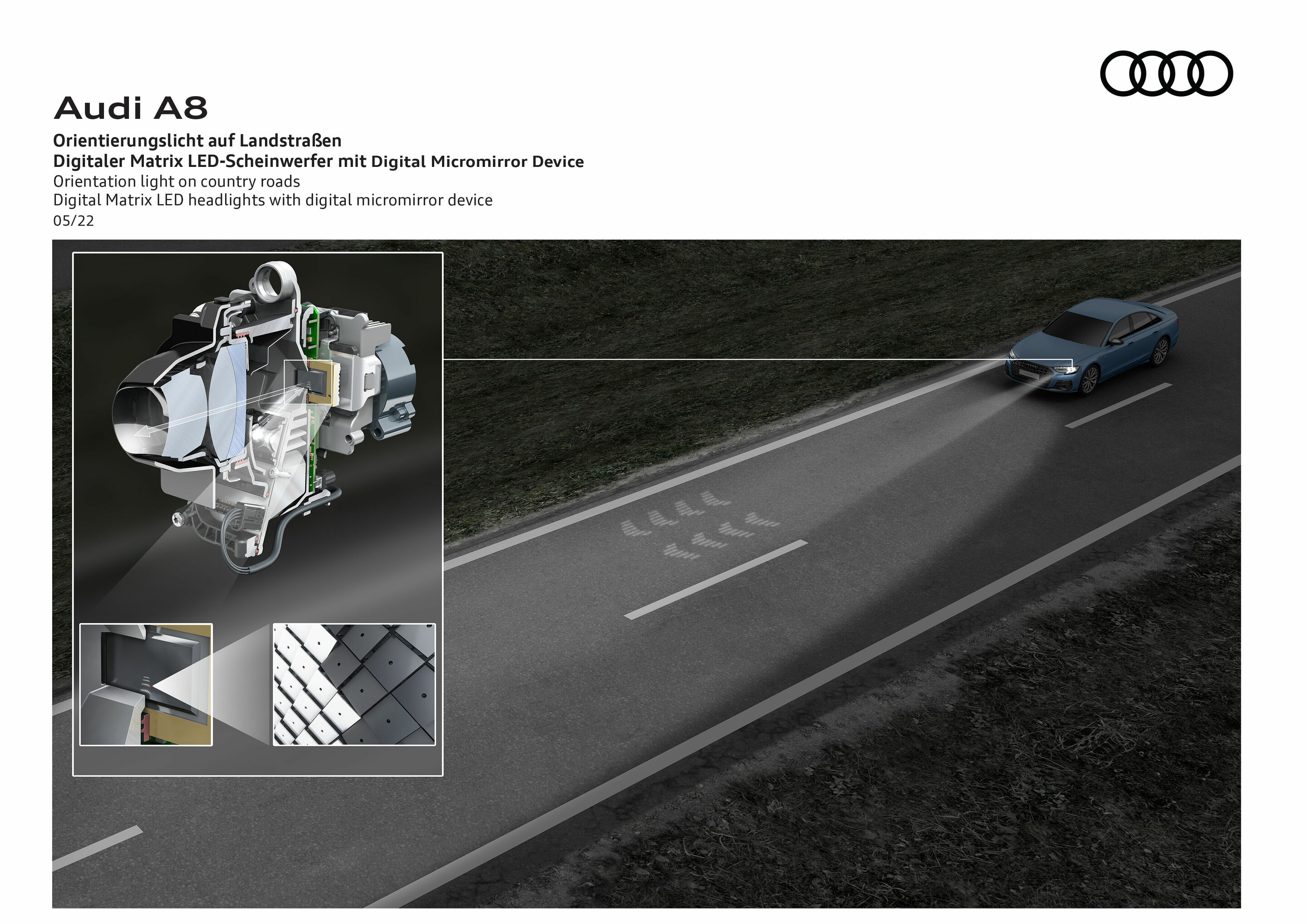 How Audi’s light digitization is pointing the way toward the future
How Audi’s light digitization is pointing the way toward the future
Safety and customer satisfaction come first at Audi. They are part and parcel of the success of the company with the four rings. In that context, light technology is steadily growing more important and creating a wider range of possibilities and perspectives, from added safety for the driver, to external communication and individualization. Systematic light digitization is making all of this possible. It is particularly visible in the new Audi A8: the forward-looking Digital Matrix LED headlights and digital OLED rear lights raise the customer experience to a whole new level: for the first time in any Audi model, light is completely digitized. The car can be individualized even further through its digital OLED rear lights. The Digital Matrix LED headlights also include three new functions: advanced traffic information, a lane light with direction indicator lights on highways, and an orientation light on country roads. These features not only demonstrate Audi’s “Vorsprung durch Technik,” they also add value.

The lights on an Audi have long provided more than just safety. They represent the interface between design and technology and they have an authoritative impact on every Audi model’s visual appearance. That is particularly distinct in the exterior design of the e-tron GT quattro and RS e-tron GT – headlights and taillights are defining elements of these models.
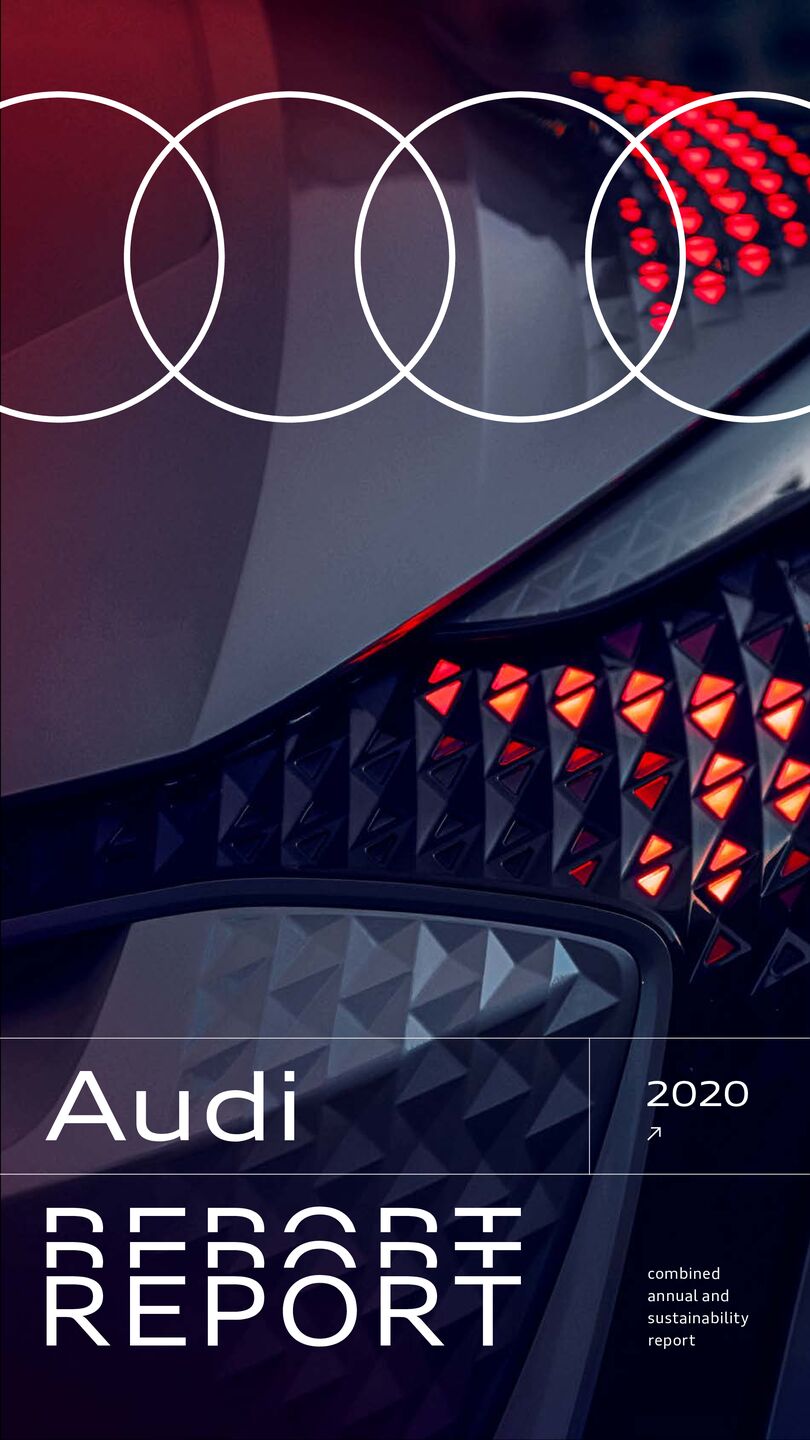 Audi Report 2020
Audi Report 2020
REPORTREPORT REPORT Audi 2020 combined annual and sustainability report Dear Readers, Stand together, but keep your distance – an idea that became last year’s watchword. The coronavirus pandemic significantly impacted day-to-day business in markets throughout the world, presenting great economic as well as emotional challenges. Thanks to our strong crisis management team, we have managed to navigate stably through the pandemic thus far. Ensuring the protection of everyone at Audi has always been our top priority. At the same time, we have examined our costs and secured our liquidity – without compromising on product substance or sustainability. Audi has the potential and is committed to taking a leading role in shaping the transformation of the automotive industry. “ Vorsprung” is in our DNA. For us, “Vorsprung” means combining unique technological innovations with a clear mindset: We want to set an example as a modern, transparent and value-based company. We want to sustainably shape individual mobility, while protecting the environment and conserving resources. Markus Duesmann Chairman of the Board of Management and Member of the Board of Management for Product Lines of AUDI AG P h o to : A U D I A G Querverweis 0-1 Intro 2Audi Report 2020 Foreword The Audi e-tron GT quattro1 is one example of this. As the brand’s progressive new spearhead, it is our first all-electric model manufactured in Germany. The e-tron GT1 stands for emotional electric mobility and sustainability. Now more than ever, our future success requires that we have a holistic understanding of sustainability, comprising the economy, environment and society. That is why we are also integrating the financial perspectives and issues related to ESG – Environment, Social and Governance – into our reporting and are publishing a combined annual and sustainability report this year for the first time. Even following last year’s acquisition of all Audi shares by Volkswagen AG, this approach will allow us to
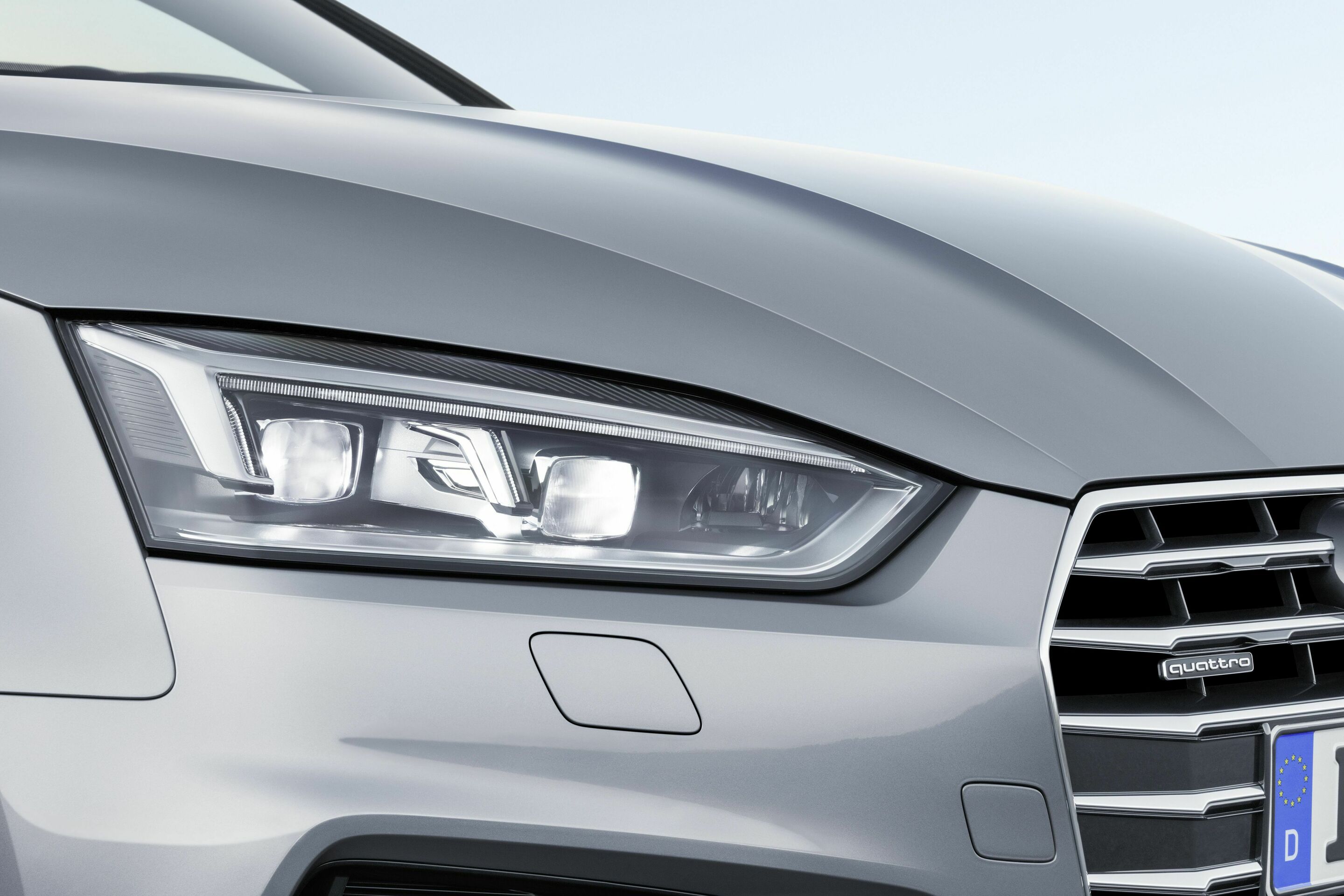 Lighting
Lighting
One of the most important laws of the road is to see and be seen. The Ingolstadt-based premium carmaker fulfills this maxim with innovative lighting technologies and combines them with highly expressive design.

From the incandescent lamp to the digital high-tech application: light-years of progress with Audi Halogen incandescent lamps enabled initial technical improvements that also affected the look of automobiles. With free-form headlights in the nineteen-eighties and clear lens covers in the late nineteen-nineties, designers were increasingly able to use light as a styling element to define the face of Audi models. The second-generation xenon headlights in the 1994 Audi A8 and the tiltable modules from 2003 onward marked development leaps that elevated the quality of light and the customer’s experience to a new level. The technology of LED light introduced in 2008 was used by Audi to make a veritable quantum leap. It replaced the previously unsegmented and indivisible lighting units, significantly surpassing the efficiency, range and illumination performance of the previous headlights. In addition to this technical progress, light-emitting diodes permitted much higher degrees of freedom in designing the light source, so light as a styling element acquired much greater significance. Segmentation as a Matrix and digitization expanded the potential even further: The lights of an Audi no longer serve the mere purpose of providing illumination. They create a new customer experience by pioneering external communication including social interaction as well as enabling a wide variety of lighting design choices. Headlight technology: looking ahead In 2004, Audi used light-emitting diodes for the first time in LED headlights, in the daytime running light of the Audi A8.Light-emitting diodes are semiconductors that can directly convert electrical energy into light. They operate with particularly high efficiency: their energy consumption is low and their light output high. In 2008, the first full LED headlights followed in the Audi R8. Today, headlights with LED technology are standard equipment in all model ranges – except for the Audi A1 as an entry-level model. In 2013, Audi was
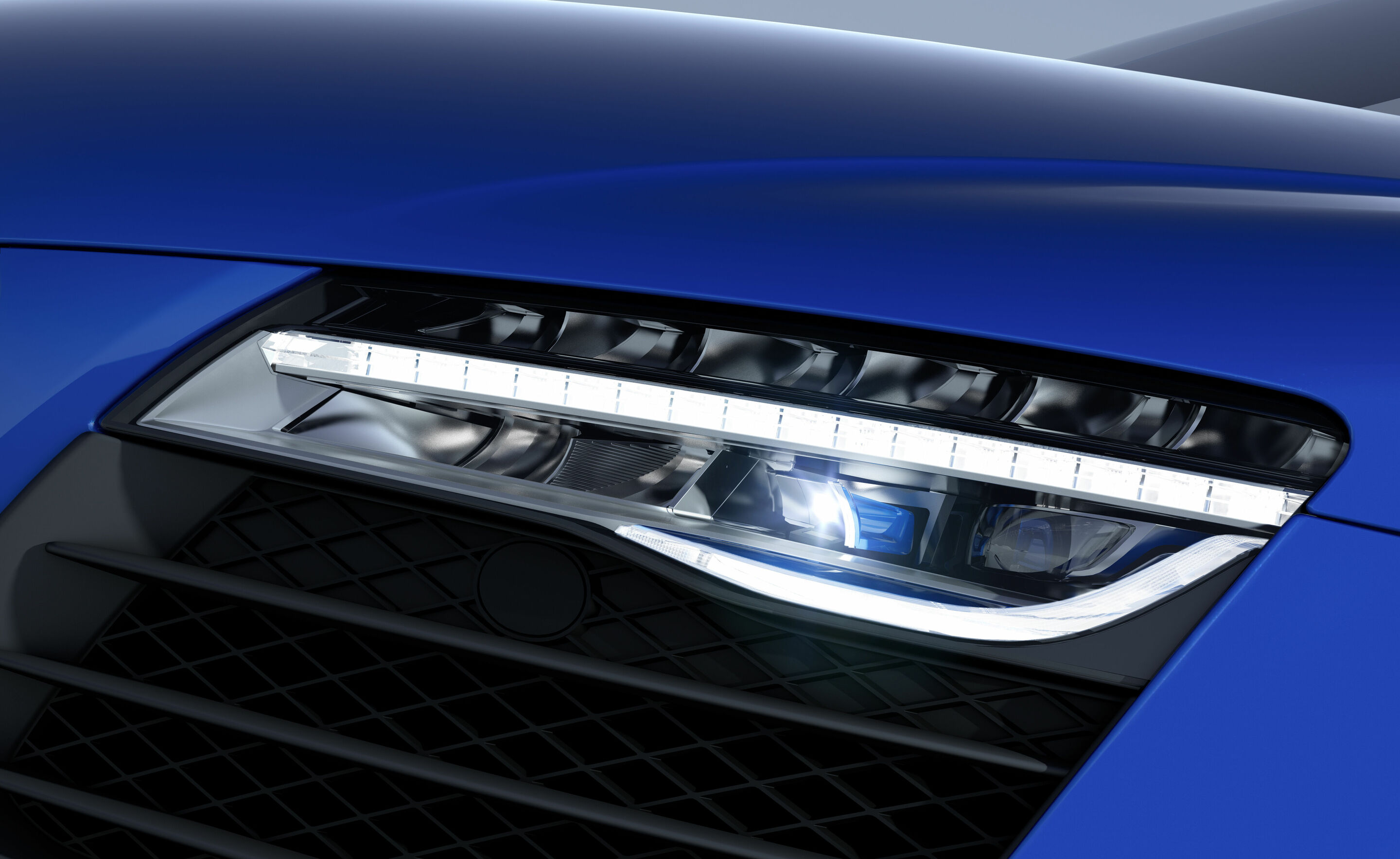 Glossary – Lighting technology terms
Glossary – Lighting technology terms
Headlights Halogen headlights Halogen headlights use incandescent lamps as a light source. Their light is typically concentrated in a reflector with a vapor-deposited aluminum coating. Halogen lamps consist of a thin tungsten filament inside an airtight glass envelope filled with halogen gas. When voltage is applied, current flows. Due to its Ohm resistance, the filament heats up and radiates light of approx. 2,700 on the Kelvin scale. The inert gas – halogen – protects the filament against oxidation, resulting in higher light output. Halogen lamps achieve very high luminous power because the glass envelope can withstand extremely high temperatures. Xenon headlights Xenon headlights are gas discharge lamps. A concentrated arc of light burns between two tungsten electrodes in a quartz-glass envelope. With a color temperature of approx. 4,200 on the Kelvin scale, it emits a much brighter light, resulting in much better illumination of the road than halogen headlights using incandescent lamps. The energy consumption of xenon headlights is about 20 percent lower, while their life is much longer than that of the previous, commonly used lamps with filaments. LED headlights LEDs (light-emitting diodes) are luminescent spotlights. The light is generated by the supply of electrical energy without mechanical action inside the semiconductor crystal. The development of the blue light-emitting diode in 1993 made it possible to generate all colors of light. The application of a small phosphorus plate converts part of the blue light into yellow light, resulting in white as the total color. This enabled the utilization of LEDs in headlights. Compared to xenon headlights, LED headlights deliver longer visual range, high efficiency and benefits in terms of safety and comfort. Because their color temperature of 5,500 on the Kelvin scale is similar to daylight, they hardly cause eye fatigue, which assists drivers in darkness and adverse weather. In conditions of fog and precipitation,
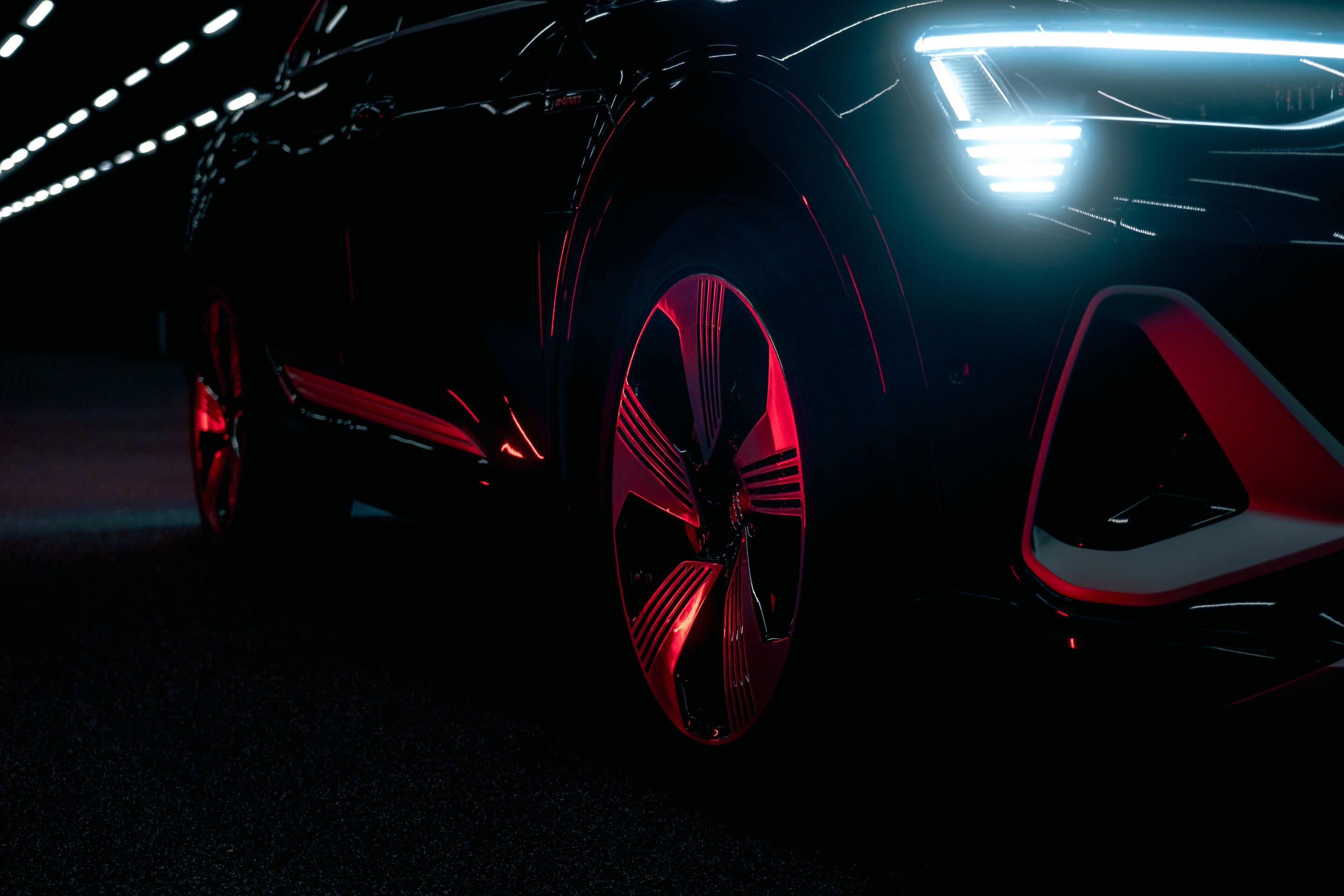
Stephan Berlitz (Head of Lighting Development) and César Muntada (Head of Lighting Design) are closely working together in the development and design of lighting systems. Their exchange shows how design and functionality at Audi go hand in hand. Stephan, César, uncompromising functionality of light and aesthetic design – are these two aspects compatible at all? Stephan Berlitz: As early as in the pre-development stage, we, as engineers, work together very closely with the design team. The questions to be answered are: What will be the benefits of a new technology in terms of functionality, but also in terms of styling? At Audi, light – first and foremost – means safety for drivers and occupants, in other words, to see and to be seen. However, our highly functional technology, let’s say, our HD Matrix LED headlights with the Audi laser as an additional high-beam light, provides scope for attractive styling as well. César Muntada: Lighting technology and light design are inseparable at Audi. Light becomes the visible expression of ‘Vorsprung durch Technik.’ This means that we’re giving the car an unmistakable face while sharpening the character of the model and brand. At night, an Audi has to be visible at first glance, both close-up and from a distance. Consequently, we use a principle that guarantees recognition without confining the scope which the character of a particular car requires. Specifically speaking, Audi creates a total lighting experience. It begins with the exterior and continues in the interior with contour ambient lighting for which the customer can choose the option of a customized color ambience. Aside from technological limits and budgets, legislation – with significant worldwide differences in some cases – restricts the potential of lighting development. How do you reconcile such differences? Stephan Berlitz: Each technology is subject to specific requirements in various countries. The statutory provisions worldwide stipulate minimum spatial, lig
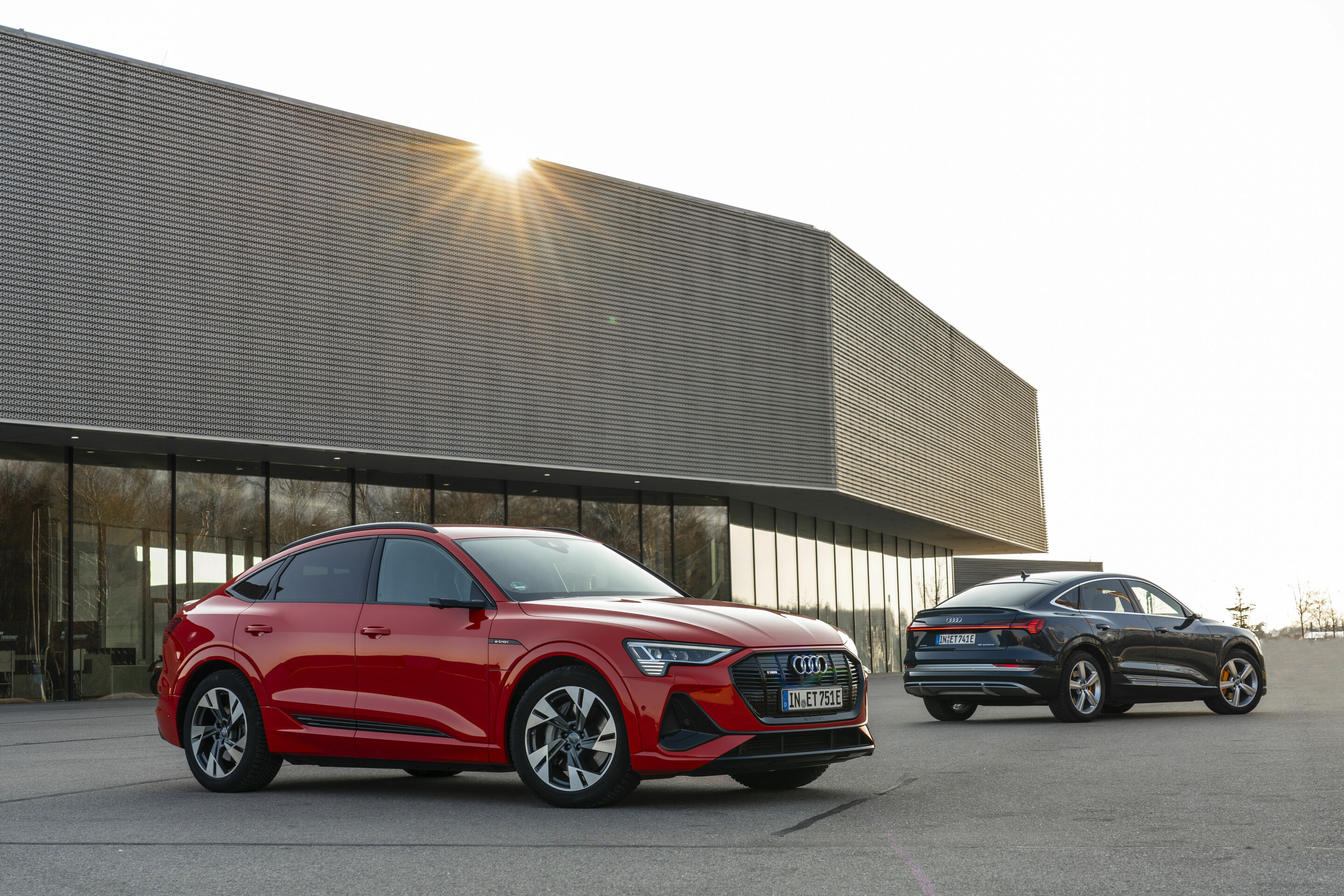
“The future is electric:” Audi is staying consistently true to its strategic alignment by presenting the second model in its e-tron product line. The Audi e-tron Sportback is a dynamic SUV coupé offering up to 300 kW of power and a range of up to 446 kilometers (277.1 miles) ( in the WLTP cycle) from a single battery charge (combined electric power consumption in kWh/100 km (62.1 mi): 26.3 - 21.6 (WLTP); 23.9 – 20.6 (NEFZ); combined CO2 emissions in g/km (g/mi): 0). Its digital matrix LED headlights are a new feature now available for the first time in a mass-production vehicle. Their light is broken down into tiny pixels and can be controlled with exceptional precision. This makes safe lane centering easier on narrow stretches of road and shows the position of the vehicle in the lane. Market introduction of the Audi e-tron Sportback** in Europe is scheduled for the spring of 2020.



